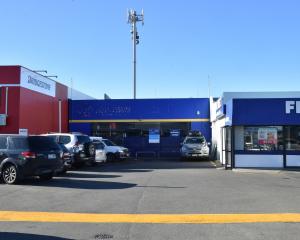
An obvious sellers’ market has resulted in clearance rates rising to their highest levels, several of the city’s more prominent auction firms claiming close to 100% success in the auction room over the past few months.
Real Estate Institute of New Zealand data reflects the upward trend. Sales under auction have moved from about 5.5% of all sales in the city to a high of about 18% in November last year.
This compares with nationwide levels of around 14%.
Almost half of the 254 sales made under auction in Dunedin came in the final four months of the year.
Harcourts Dunedin manager Richard Stringer said vendors had been exhibiting a "clear preference" for auctions over the past few months as people saw the benefits of transparency and fast settlement.
At present, typical auctions were attracting around five or six "serious" bidders from the 50 or 60 who had registered at the open home, he said.
LJ Hooker auctioneer Jason Hynes said clearance levels had been at or close to 100% at the firm’s midweek auctions, where there had been some record outcomes.
"It does depend on how realistic the reserve is, but the general trend is positive."
This week, a four-bedroom, two-bathroom Maori Hill property sold at auction for just under $1.4million, $500,000 ahead of the $895,000 estimate and a full 70% above the rateable value.
"An auction can do that. At this price level, all the buyers in the room were in a strong position to close the sale under the hammer."
Mr Hynes said while higher-priced homes tended to attract buyers who were in a "better position" to make unconditional offers, auctions were becoming more the norm than the exception and were being used across all price entry points.
"First-home and other new buyers could be nervous of the process and it certainly isn’t for everyone, but in many cases it yields great results and importantly, provides transparency through the process."
North Island buyers in particular were more "comfortable" with the auction concept, and other buyers would make multiple visits to the auction room to familiarise themselves with the process.
"It says something that our Dunedin office is consistently in the top across both New Zealand and Australia, with around two of every three sales coming under the auction sales process.
"That just reflects its level of acceptance in the city."
Every agency was a bit different in terms of its preference and auctions were less popular in certain areas.
"North Otago, for example, prefers private treaty, while other areas are bigger on deadline sale."
Mr Stringer — an auctioneer for the past 16 years — said his firm was transacting around 25% of its overall sales under the hammer at present.
Of that, around 96% were successful, including 7% which sold post-auction.
"As a seller it is definitely our preferred option given the market sentiment, providing transparency to the buyer and certainty to the seller.
Mr Hynes said while people tended to equate auctions with buoyant markets, as a method of sale it had benefits that transcended market conditions.
"One of its big benefits is that it allows buyers to understand where they are positioned relative to other offers."
Some buyers were also using online auction platforms such as Gavl, which allowed potential buyers to remotely access livestreamed auctions and bid online, he said.
Real Estate Institute chief auctioneering champs judge Mark Sumich said the cost elements of auctioning a property were "no different" from other methods.
"Auctioneer fees can vary, depending on a number of factors, but otherwise the only fees relate to how much marketing you want to do."
The auction market was very strong in Otago, backed by a "strong culture" of auctioning, he said.
Mr Stringer said the major difference was that both the vendor and buyer needed to have done their homework before they walked into the auction room. The more information the seller could offer, in the form of a LIM and other reports, the more confidence the buyer had during the bidding process.












